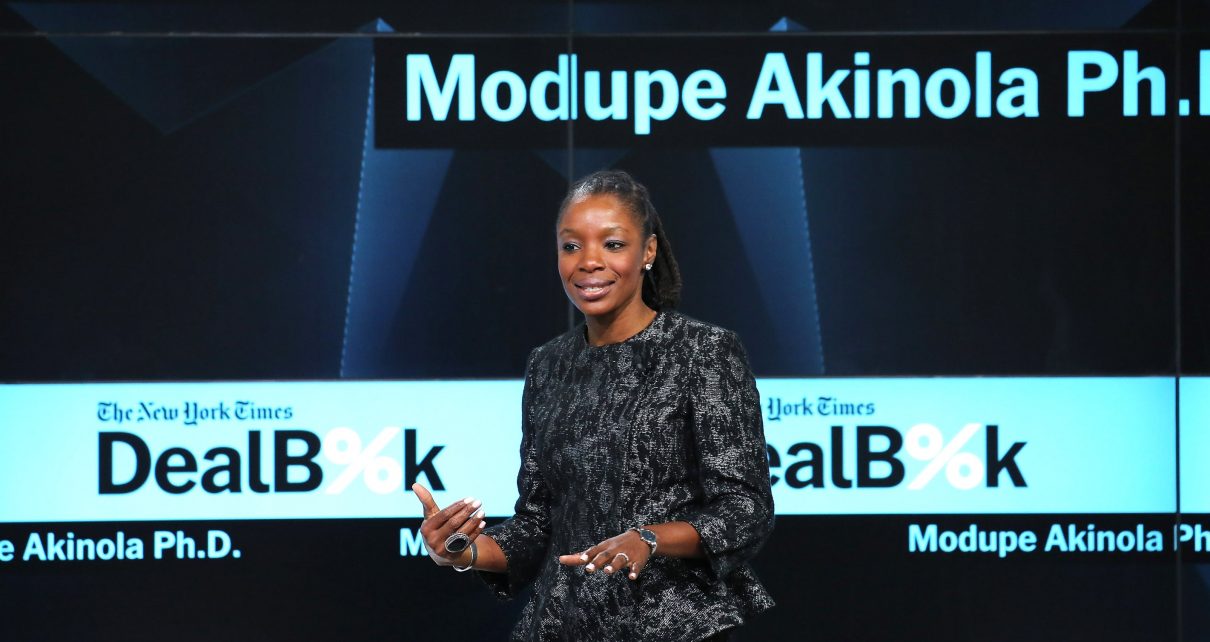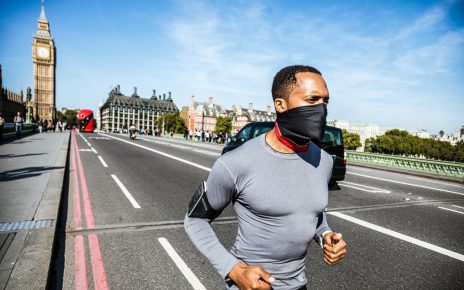The Black Lives Matter protests shaking the world have thankfully brought renewed attention not just to police brutality but to the broader role of racism in our society. Research suggests some roots of racism lie in the stereotypes we hold about different groups. And those stereotypes can affect everything from the way police diagnose danger to who gets interviewed for jobs to which students get attention from professors. Negative stereotypes harm Black Americans at every turn. To reduce their pernicious effects, it’s important to first understand how stereotypes work and just how pervasive they are.
Modupe Akinola, an associate professor at Columbia Business School, studies racial bias, workforce diversity and stress. Recently, Katy Milkman, a professor at the Wharton School at the University of Pennsylvania, got to chat with Akinola about how stereotypes are formed, how they affect consequential decisions and how we can combat negative stereotypes.
[An edited transcript of the interview follows.]
Let’s start at the beginning. What is a stereotype?
A stereotype is a snap judgment we make about a person or about a thing that can influence our decision-making. Every day we get millions and millions of bits of information in our head that associate good and bad with certain people or groups or things. And anytime we then see those people, groups or things, that association comes immediately to our mind.
Why do you think we do this?
We’re processing so much information all the time; we need these mental shortcuts to allow us to navigate the world. If not, we wouldn’t be able to function, quite frankly. We have to make quick judgments to make life easier and to simplify. But any type of shortcut can have its pros and cons.
Could you talk about some of the research connecting stereotyping with racism?
One of my favorite sets of studies examines stereotyping as it relates to policing. I grew up in New York City. And we heard a lot about Amadou Diallo, who was an unarmed Black man who was shot by police, because they thought he was carrying a gun—when in actuality, he raised his hand, and he had a wallet.
Joshua Correll, [now at the University of Colorado Boulder], and his colleagues wanted to look at whether the stereotypes associating Black people with danger could play a role in how a mistake like that could be made. The news we see regularly shows crime rates being higher for certain populations, mostly minority populations,. And so this creates an automatic stereotype that a Black man would be more linked to danger than a white man, because you don’t see those same associations for white people.
Correll came up with a computerized shooter bias exercise that showed pictures of targets, Black and white men, carrying objects, either weapons or regular objects like a Coke can or a wallet. When you saw a person and the object, you had to click on whether or not to shoot. He found that civilians were more likely to shoot unarmed Black men, relative to unarmed white men and even armed white men, which was attributed to the stereotypes associating Black people with danger.
I found that study fascinating, because it showed just how powerful these associations can be. I did some follow-up research, because I wanted to see if stress affects that decision-making process. I stressed out police officers and had them engage in the shooting exercise.
The interesting thing is: I saw that under stress, officers were more accurate. They were able to discern whether to shoot an armed Black man and did that better in terms of not shooting unarmed Black men. However, they were less likely to shoot armed white men, which I think demonstrates the power of stereotypes, because there isn’t a stereotype of white and danger.
Stereotypes work in two ways: they can harm some groups, and they can protect others.
Are there any other studies about stereotyping that you think people might find illuminating?
My favorite are audit studies, where you observe real-world behavior. There have been audit studies where people go to car dealerships to see if people are treated differently and about who gets mortgages and things like that.
One audit study was testing ads in the newspaper, which were advertising entry-level positions. [The researchers] sent candidate résumés to these job ads, which were identical, and changed the names on the résumés to signal race. “Lakisha” and “Jamal” were Black-sounding names that were tested and pretested to ensure they would signal race versus a name like “Catherine,” which would be a more white-sounding name. They waited to see who called back for which candidates. The Lakishas and Jamals received fewer callbacks for an interview than the white-sounding names.
Again, this behavior is attributed to stereotypes. We make presumptions and snap judgments about who might be more qualified for a job, who might do well in a job, even in the context of identical information.
Would you be willing to describe a little bit of the work we’ve done together on the role of stereotyping in academia?
Certainly. We—you, I and Dolly Chugh [of the Stern School of Business at New York University]—wanted to see if racial or gender stereotypes impact the pathway to academia. As you’re applying or thinking about getting a Ph.D., often you’ll reach out to a professor and ask, “Are you taking graduate students?” or “Can I learn more about your research?” We get these e-mails, all the time, asking for time on our schedule. And we wanted to see if professors would differentially respond to these requests, depending on the race and gender of the requester.
We sent e-mails to around 6,500 professors across the country, at both private and public universities. We sent these e-mails that were identical, except we varied the race and gender of the name of the applicant.
These e-mails said, “Dear professor so-and-so, I’ll be on campus on XYZ day, on a Monday or Tuesday, and was wondering if I could take some time to learn about your research.” The names on these e-mails were Chinese names, Indian names, African-American-, Latino- and white-sounding names. We pretested all these names to ensure that they did signal the race and gender we thought they would.
We expected to see more stereotyping or discrimination (i.e., fewer responses) to nonwhite males when asked to meet next week versus today. Why? Today everyone’s pretty busy, and so there’s no time for the stereotypes or snap judgments to come into your mind about who might be a more qualified student, who you might want to respond to and meet with.
However, in a meeting request for next week, you might go through more scrutiny about whether the candidate is worthy of your time. We thought that’s when stereotypes would set in. Maybe for some categories, it’s “Do they have English-language proficiency?” For other categories, given the lack of minorities in academia in general, there might be the question of “Can they cut it?”
As we predicted, we did find fewer responses for all of the other categories, relative to the responses to white males, for a meeting request for next week. The question then was whether we’d see this when we matched the race and the gender of the professor with the race and the gender of the student. We still found that requests for next week, regardless of the race of the professor, are lower for candidates other than white males.
As an African-American professor, in the early days of my teaching, I’d often find myself setting up to teach a class, and somebody, usually a prospective student, would come in and say, “I’d like to sit in and learn more about this class. Where’s the professor?” They would say that to me as I was setting up, looking like the professor—on the computer, getting everything ready. That, for me, was a perfect example of how stereotypes can play a role.
The stereotype of what a professor looks like—an older white man with gray hair—is one of the factors that might make somebody come in, see a person at the podium preparing for work and wearing a suit, and ask who the professor is. I love those moments, in some ways, because one of the ways in which you change people’s stereotypes is by having counter-stereotypical exemplars.
Let’s talk more about that. How can we combat stereotypes or try to reduce the harm they cause?
I think one of the ways we can reduce the harm of stereotypes is just being aware. Sometimes you’ll be walking down the street, and you’ll make a snap judgment and not even realize it. But I think one of the critical aspects is noticing, “Oh wow, that came up for me. That’s interesting,” and thinking, “Where did that come from?” We can change our behavior when we’re more aware that our behavior is being influenced by stereotypes.
The other way is by being exposed to counter-stereotypical exemplars. As an African-American, female professor, a student’s mere exposure to me means that the next time they go into a classroom with an African-American woman setting up, or someone else who might defy the stereotype of what a professor looks like, they won’t automatically say, “Where’s the professor?”
I often tell my students they have a beautiful opportunity to be the walking, breathing and living counter-stereotypical exemplars in their work environments. I ask them to think about the stereotypes that exist about them, the stereotypes that exist about people around them, the stereotypes that exist about people on their teams— and to realize that, every day, they have the opportunity to defy those stereotypes.


